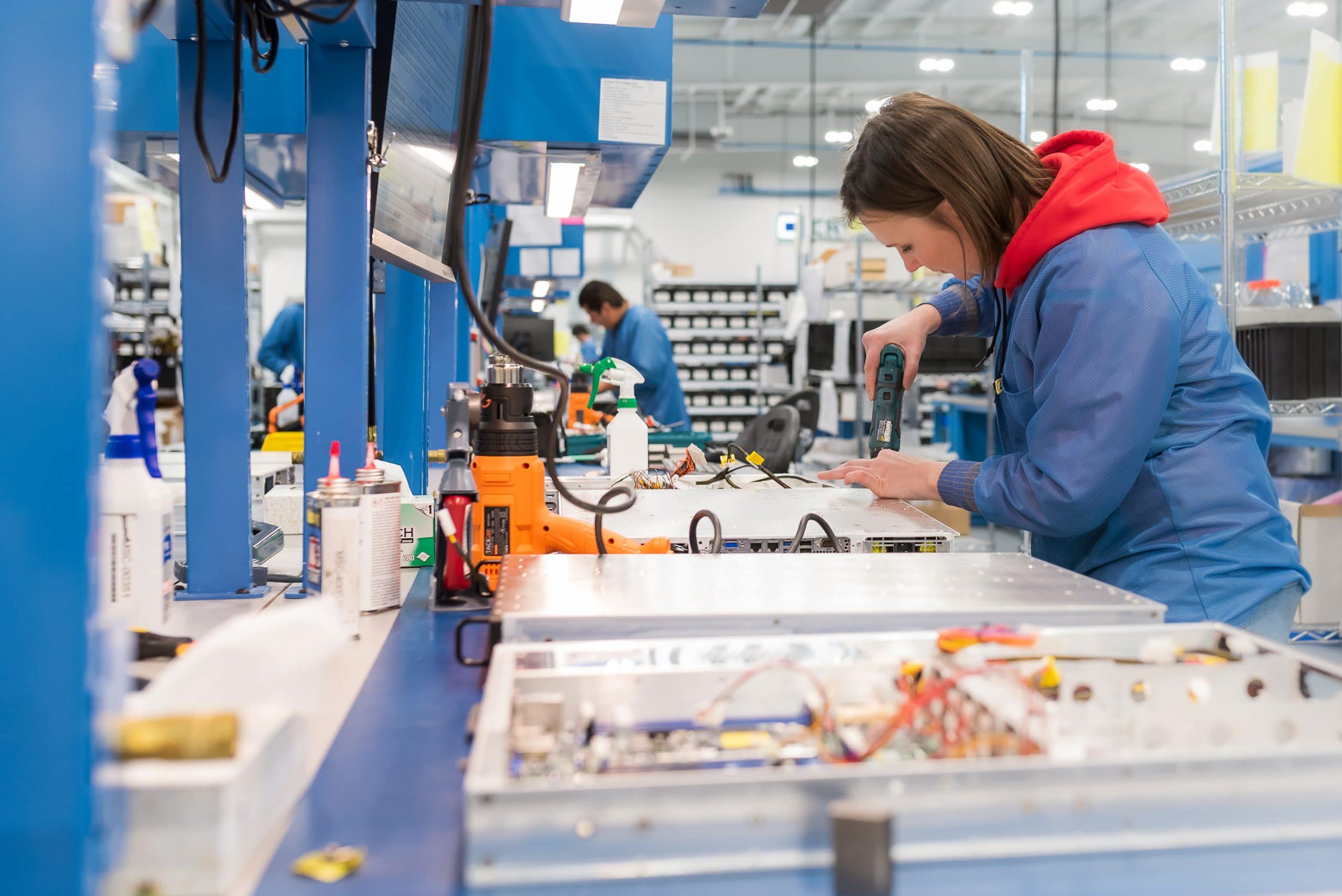
The benefits of doing more with less
Consolidation is frequently misunderstood to be either about reducing costs or saving space. But neither tells the whole story. Ultimately, consolidation is a matter of efficiency to achieve a competitive edge.
Improved costs are a beneficial, but often unintended, consequence. And saving space helps improve efficiency, but offers so much more. In aerospace applications, for example, the point is to make better use of the existing, very limited space—not to fly a mostly empty plane. We see this theory in practice today as EW platforms transition from RC135 to C130 to G550 aircrafts as each transition gets lighter, smaller, and more efficient through ongoing technology consolidation.
- Optimize space. Maximizing the use of available space is the most common driver behind consolidating multiple workloads. For example, the Crystal Group RS1104 rugged ISR encoder combines high-speed packet switching, video encoding and streaming, storage, and computing capabilities in a single unit. Instead of three to four 1U devices (a network switch, a video encoding, NAS, streaming system, and a server unit), you only need to deploy one. But even where space constraints can be met comfortably, achieving the same capabilities in half the space leaves you extra room for additional capabilities, redundancy, or range.
- Reduce weight. Managing SWaP is at the heart of every design effort. Yet scaling capability inherently implies an equal scaling weight: getting “twice the intelligence” comes with twice the weight. Combining multiple workloads in a single unit allows you to increase capability with minimal weight increase.
- Improve equipment management. Consolidating compute solutions into means fewer units to deploy, which in turn means there are fewer units to manage and track, resulting in decreased logistical burdens. And with fewer units to ship, install and configure, they can be shipped and deployed faster and more efficiently.
- Increase reliability. Integrating heavy workloads in rugged equipment, which is already designed for highly reliable operation, increases overall reliability. Reducing the total number of components, as well as total units, means there are fewer parts and deployed units delivering the same or greater capabilities with less chances of a malfunction.
- Decrease EMI while increasing EMC. Consolidating supporting components—power supplies and cables, cooling fans, internal connection cables and the like—results in reduced electromagnetic interference (EMI) and improved electromagnetic compatibility (EMC). This is useful in emission-sensitive military applications, as well as many niche industrial applications that need to accommodate units with less than ideal shielding capabilities and limited commercial off-the-shelf (COTS) solutions to choose from.
Design challenges and critical considerations
Like everything else in engineering, consolidation is a design trade-off. It increases a system’s capability while making it lighter; easier to manage, deploy and integrate; and more reliable. But it still means cramming more power and functionality into less space. Multiply that with the demanding edge environments that require equipment to withstand unpredictable, punishing environmental factors and you’ve reached a new level of complexity. Because whether it’s rough terrain, extreme temperature variations, high altitudes, dust, shock or salt fog, your rugged compute equipment has to work without fail.
- Thermal management. For systems that must function in high-temperature and/or poorly ventilated environments, consolidation compounds the problem by increasing the density of electronic components and the corresponding amount of heat that the system has to evacuate.
- Shock and vibration. Keeping shock- and vibration-resistant devices space and cost efficient is particularly challenging because, while they can be built around ruggedized COTS parts, system components routinely have to be designed from the ground up.
- Flexible configuration. Individual units have a fixed configuration, but if you deploy separate units, you can mix and match COTS equipment as needed. Consolidated units may have expansion capabilities, but the base configuration is fixed.
Factoring all these elements into the design of our RS1.532L21X2F rugged twin server, took close collaboration with the customer’s engineering team to pinpoint their exact specifications, thorough research, and the knowledge and experience we’ve gained in designing equipment for combat, sonar and electronic warfare applications.
Your competitive edge
When space, weight, mobility, response time or efficiency are critical for your application, consolidating compute workloads can give you a real competitive edge. Consolidated designs, though challenging, are often the only way to deliver critical capabilities in space- and/or weight-constrained applications—and may also offer important benefits for other applications.
The first step in designing the right level of consolidation and performance into a rugged compute solution is understanding exactly what the given application needs to do and in what conditions. Then, the real fun can begin.